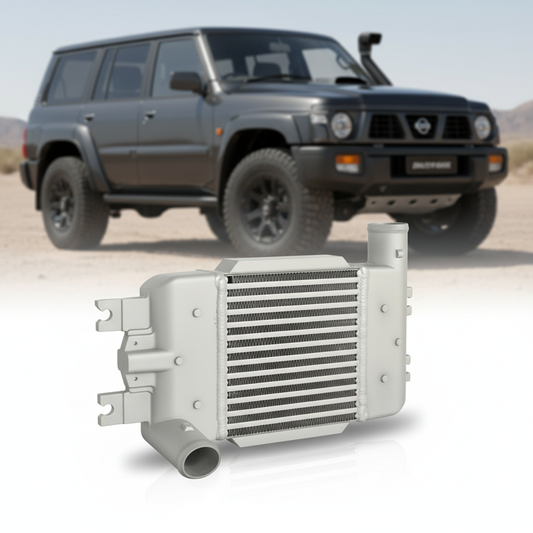When it comes to modern cars’ "fuel-saving champions," the auto start-stop system might come to mind first. Every time you stop your car, the engine takes a brief "nap"; the moment you release the brake, the engine wakes up instantly. It seems like this system not only saves fuel and reduces emissions but also contributes to environmental protection. However, while we enjoy this "smart" technology, it occasionally "malfunctions," catching us off guard. So, what causes the auto start-stop system to fail? Today, let's uncover the truth behind it!
The Principle of the Start-Stop System: How Does It "Smartly" Work?
Imagine stopping at a traffic light when your engine automatically shuts off. This is where the start-stop system steps in, quietly monitoring the brake pedal, vehicle speed, engine temperature, and other factors. When you release the brake or press the accelerator, the system starts the engine instantly, helping you take off quickly and easily from the stopping position.
However, if the system detects any "abnormalities," such as a low battery charge or high engine temperature, it will take a "break" to avoid unnecessary stop-start actions.
The "Brain" of the Start-Stop System: Which Components Work Behind the Scenes?
-
Start-Stop Control Module
Function: The brain of the start-stop system, controlling when the engine shuts down and starts.
Location: Typically found near the electronic control unit in the cabin. -
Start Battery (Starter Battery)
Function: Provides continuous power to the start-stop system, ensuring the engine starts and stops smoothly.
Location: In the familiar battery position, typically located in the engine bay or the trunk. -
Starter Motor
Function: Every time you release the brake, it’s the "assistant" that wakes up the engine quickly.
Location: Near the engine.
-
Sensors (such as brake sensors, speed sensors, etc.)
Function: Monitor whether the brake is pressed, the speed is zero, and the engine is at an appropriate temperature, ensuring the start-stop function works precisely.
Location: Under the brake pedal, on the wheels, and next to the engine. -
Electro-Controllable Valves and Valve System
Function: Control airflow to help the engine run smoothly during start and stop actions.
Location: Directly connected to the engine.
Common Problems with the Start-Stop System: Simple on the Surface, But Hidden Mysteries Inside
-
Low Battery Charge
Symptoms: The start-stop system "fails"! You may see a "Start-Stop Function Temporarily Disabled" message on the dashboard, and the engine won’t start or shut off properly.
Potential Cause: The battery charge is insufficient or the battery is aging and cannot provide enough power.
Solution: Check the battery charge, recharge it if low, and replace the battery if it’s aging. -
Accidental Operation of the Start-Stop Button
Symptoms: The start-stop system suddenly disappears, and the display says "Start-Stop Function Disabled."
Potential Cause: You may have accidentally pressed the start-stop button, turning off the system.
Solution: Check if the start-stop button was accidentally pressed and turn the system back on. If the button is damaged, have it repaired or replaced. -
Sensor Failure
Symptoms: The start-stop system "stalls," the engine doesn’t start or stop smoothly, or the start-stop operation is irregular.
Potential Cause: The sensor is not accurately detecting the vehicle’s status, causing the system to malfunction.
Solution: Check whether the sensors are dirty or damaged. Clean or replace them if necessary. -
Starter Motor Failure
Symptoms: The start-stop system fails to start the engine, and the dashboard shows "Start Failure."
Potential Cause: The starter motor’s electrical system may be faulty, or there might be poor electrical connection.
Solution: Check the connections between the starter motor and the battery to ensure smooth electrical flow. If the motor is damaged, replace it. -
Overloaded Air Conditioning System
Symptoms: The start-stop system frequently halts in hot weather, and air conditioning performance is unstable.
Potential Cause: The air conditioning system is overloaded, and the battery charge is insufficient, preventing the start-stop system from working smoothly.
Solution: Reduce the load on the air conditioning system and ensure the battery has sufficient charge. If the air conditioning system is problematic, get it serviced.
How to Identify the Quality of the Key Components in the Start-Stop System?
-
Start-Stop Control Module
Quality Check:- The module should be responsive and quickly detect brake and accelerator actions to ensure smooth operation of the start-stop system.
- High-quality modules operate with minimal delay, and engine start/stop actions should be smooth.
- The module’s housing should be sturdy, without cracks or damage, and have strong waterproof and dustproof capabilities.
-
Start Battery
Quality Check:- The battery should have a long lifespan, strong charging ability, and stable power output.
- The battery surface should be free from corrosion or swelling, and the voltage should remain within the normal range.
- The start-stop system should still operate even when the battery charge is low, indicating good performance.
-
Starter Motor
Quality Check:- The motor should start quickly, with minimal noise or vibration.
- The motor should run smoothly without abnormal sounds or vibrations and should efficiently start the engine.
- The appearance should be free from significant damage or rust, and the electrical contacts should be clean and free from oxidation.
-
Sensors
Quality Check:- The sensors should be highly responsive and accurately detect brake, accelerator, and vehicle speed information.
- Feedback should be accurate, ensuring the start-stop system responds promptly.
- The housing should be sturdy, able to withstand external pressure and environmental impacts, and maintain stable long-term operation.
-
Electro-Controllable Valves and Valve System
Quality Check:- The valves should open and close quickly and precisely, with good sealing to avoid air leakage.
- A high-quality valve system helps maintain smooth airflow, ensuring efficient engine operation during start-stop actions.
- The valves should be free from cracks, rust, or other physical damage, and the sealing gaskets should remain intact to prevent air leakage.
Key Points to Note When Installing the Start-Stop System
-
Start-Stop Control Module
Installation Location: The control module is usually found near the electronic control unit in the cabin.
Installation Notes: Ensure the electrical connections are secure to avoid loose connections and signal distortion. The module’s housing should stay clean and free from dust or moisture. -
Start Battery
Installation Location: Typically located in the engine bay or the trunk.
Installation Notes: The battery terminals should be clean and tightly connected to avoid loosening. The battery should be kept in a dry, well-ventilated area.
-
Starter Motor
Installation Location: The motor is typically installed next to the engine, ensuring proper alignment.
Installation Notes: Ensure the motor is firmly connected to the engine, and check that the wires are securely fastened. -
Sensors
Installation Location: Sensors are located on the brake pedal, wheels, and engine.
Installation Notes: Avoid contamination or incorrect placement of sensors. Ensure the sensor wiring is intact. -
Electro-Controllable Valves and Valve System
Installation Location: These components are directly connected to the engine.
Installation Notes: Ensure the valves seal tightly to avoid leaks, and check that airflow remains unobstructed during the start-stop operation.
Conclusion
The smooth operation of the start-stop system depends on the precise coordination of its components. Proper installation is crucial, and each part’s position, connection, and surrounding environment must meet the required standards. Any missteps during installation can lead to malfunctions or damage to the system. To ensure optimal performance, it’s best to have the system installed and adjusted by professional technicians to avoid unnecessary problems.




